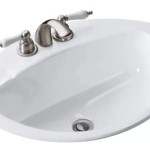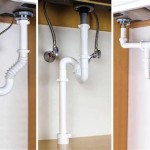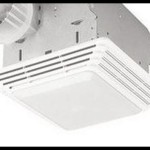How to Take Moisture Out of a Bathroom Drain
Bathroom drains are susceptible to moisture buildup, which can lead to problems like unpleasant odors, mold growth, and even plumbing issues. Moisture accumulates in drains due to various factors, including humidity, water splashes, and the presence of hair and debris. Fortunately, there are effective methods to eliminate moisture from bathroom drains, preventing these problems and maintaining a clean and healthy bathroom environment.
Regular Cleaning and Drying
Regular cleaning and drying of the bathroom drain is fundamental in preventing moisture buildup. The process involves removing visible debris, such as hair, soap scum, and other particles, and drying the drain to prevent water accumulation. Here's a step-by-step guide:
- Remove Debris: Use a drain snake or pliers to remove visible debris from the drain. This step helps to ensure proper water flow and minimize the accumulation of organic matter that can foster moisture and odor.
- Clean the Drain: Pour a cup of baking soda followed by a cup of white vinegar into the drain. The mixture will create a fizzy reaction that helps to loosen and remove accumulated grime and debris. Let the mixture sit for 15-20 minutes before flushing with hot water.
- Dry the Drain: After cleaning, dry the drain thoroughly using a clean cloth or towel. This step helps to remove any remaining moisture and prevent the growth of mold or mildew.
- Repeat Regularly: It's recommended to clean and dry your bathroom drain once a week to prevent moisture buildup and maintain a clean and healthy environment.
Ventilation and Dehumidification
Proper ventilation and dehumidification play crucial roles in reducing moisture levels in the bathroom. These methods help to circulate air and remove excess moisture, creating a dryer environment that inhibits the growth of mold and mildew.
- Exhaust Fan: Ensure your bathroom is equipped with a functional exhaust fan and use it during and after showers or bath time. The fan effectively removes moisture-laden air from the bathroom, preventing it from settling in the drain and surrounding areas.
- Open Windows: If possible, open the bathroom window after showering or bathing to allow fresh air to circulate and help dissipate moisture. This is particularly effective in areas with low humidity or during cooler seasons.
- Dehumidifier: Using a dehumidifier in the bathroom can significantly reduce moisture levels, especially in humid climates or when the bathroom lacks adequate ventilation. Regularly empty and clean the dehumidifier to ensure effective moisture removal.
Moisture-Resistant Drain Cover
A moisture-resistant drain cover serves as a barrier between the drain and the surrounding environment, preventing moisture from entering the drain and causing problems. These covers often feature a design that allows water to flow freely while blocking debris and preventing moisture from accumulating.
- Material Options: Drain covers are available in various materials, including metal, plastic, and silicone. Choose a material that is durable, resistant to moisture and corrosion, and easy to clean.
- Design Considerations: Select a drain cover with a design that allows for proper water flow, prevents clogging, and effectively seals the drain against moisture intrusion.
- Installation: Follow the manufacturer's instructions for proper installation to ensure a secure and effective moisture barrier.
Maintaining a Dry Environment
Creating a dry environment in the bathroom is crucial in minimizing moisture buildup. Here are some additional tips that can help to prevent moisture problems:
- Shorten Showers and Baths: Taking shorter showers and baths helps to reduce the amount of moisture released into the bathroom, minimizing the risk of buildup in the drain and surrounding areas.
- Wipe Down Surfaces: After showering or bathing, wipe down wet surfaces, such as the floor, walls, and shower stall, to prevent excess water from accumulating and contributing to moisture problems.
- Fix Leaks Promptly: Address any leaks in the bathroom promptly, including those around faucets, pipes, and the showerhead. Leaks contribute significantly to moisture buildup and can lead to damage and mold growth.
By implementing these methods, you can effectively take moisture out of your bathroom drain, preventing unpleasant odors, mold growth, and plumbing problems. Regular maintenance and proper hygiene practices are essential in maintaining a clean, dry, and healthy bathroom environment.

How To Clear A Clogged Drain Reviews By Wirecutter

Two Easy Ways To Fix A Smelly Shower Drain I Rick S Plumbing

How To Keep Sand Out Of Your Pipes Sarkinen Plumbing

How To Clean A Bathroom Sink 12 Best Tips

What To Do If Your Bathroom Floods Living By Homeserve

Bathroom Leak Top 5 Causes Waterleak Co

Oh Poo Sewage Coming Up Through Bathtub

Blue Green Stains On Bathroom Fixtures A Ga Plumber Explains Mr Atlanta
My Bathroom Smells Bad But Only When Its Hot Outside It Also Will Slightly Go Away I Run The Sink And Toilet Bathtub Any Thoughts On What Is

Water Leaking From Under The Bathtub Possible Causes And Solutions







